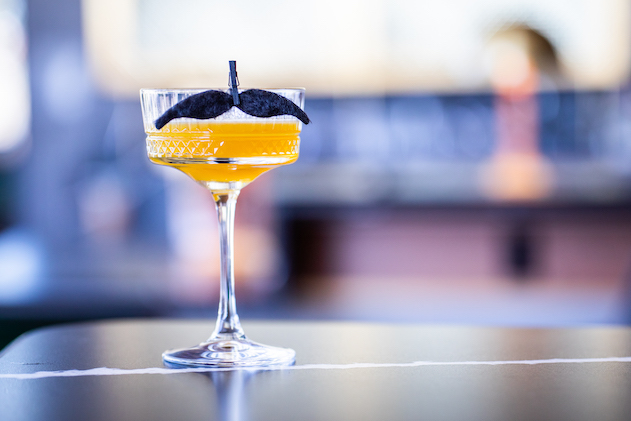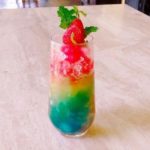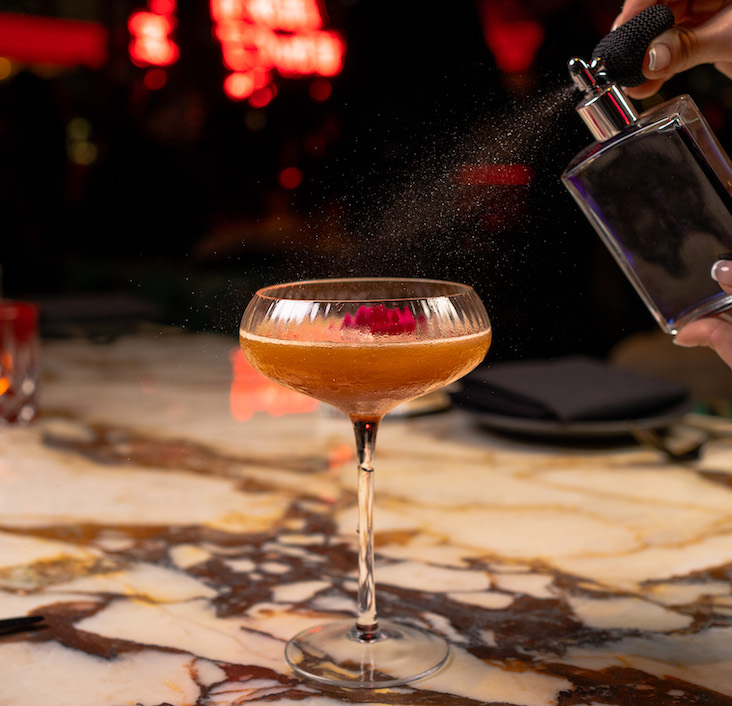“Vodka pays the bills. It’s the leading spirit in terms of sales,” says Jay Giordano, beverage director at Six\West in Boston.
The New-American restaurant and bar carries eight vodkas, each made with different bases for variety and flexibility. The lineup includes two flavors—Ketel One’s Citroen and Oranje. [Editor’s Note: The reporting for this article took place before the coronavirus business restrictions went into effect, so many operators are shifting strategies and plans.]
“Not all bartenders like vodka,” Giordano concedes, “but all bartenders like money, and those two roads certainly intersect.”
Consumers certainly love vodka. The category was up 1.2% in 2019, reaching 77.57 million 9-liter cases, according to the Beverage Information and Insights Group, Cheers’ sister company. Vodka is still by far the largest spirits category in the U.S., representing 32.5%.
Necessary Ingredient
“Obviously vodka is a necessary ingredient behind the bar, since it is the most-called-for spirit,” says Vince Landi, bar manager at Miller Union in Atlanta. Vodka is at the top of the restaurant’s sales mix, followed closely by whiskey, which is a focus at the farm-to-table operation, and cocktail bar.
Landi stocks six vodkas, including one flavor. “By far the most popular call vodka these days is Tito’s. There are also many calls for Grey Goose and Ketel One. And we still get calls for Stoli once in a while,” he says.
“We’ve had a Moscow Mule on the menu at Ward 8 since we opened in 2013, and it’s always the highest-selling cocktail,” says Mike Wyatt, beverage director for the Boston-based, multiunit operator All Day Hospitality Group. The restaurant stocks four vodka brands, based on customer request, says Wyatt, with Tito’s the most-popular call.
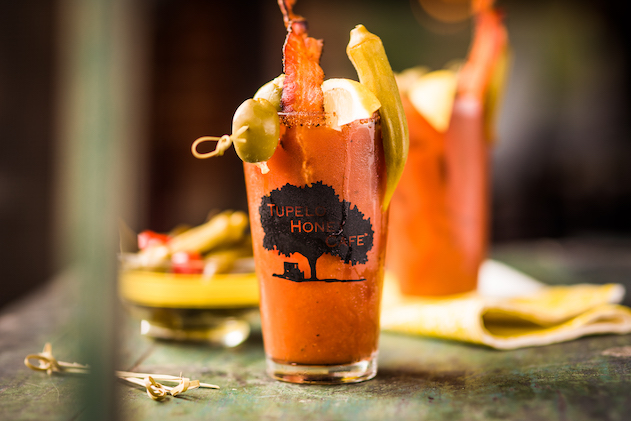
The Ward 8 lineup includes one citrus flavor for classic cocktails such as the Cosmopolitan. “Vodka-sodas are definitely popular and have been on the rise recently with more and more people becoming health conscious,” Wyatt adds.
“Vodka is still one of the most popular spirits among consumers, but the decline over the last few years has been noticeable,” says Corey Thomas, bar lead at Bankers Hill Bar + Restaurant in San Diego. Agave spirits have been the current rising stars, he contends.
Bankers Hill stocks six different vodkas, none flavored. Martinis are still the top vodka cocktail.
Vodka-sodas have become increasingly popular due to the trend toward keto/low-carb diets, notes Thomas. “Cosmopolitans, Lemon Drops and similar classics are still popular with the older crowd, but are decreasing steadily.”
“Our most-popular call vodkas are Tito’s and ‘whatever’s in the well!’” says Tyler Alford, vice president of operations for Asheville, NC-based Tupelo Honey Cafe, which operates about 15 units.
Looking at the chain’s data from 2019, Alford says call-vodka drinks make up about 9% of liquor sales, vodka-based signature cocktails make up about 12%, and Bloody Marys make up about 18%, for a total percentage of liquor sales at 39%.
Most call-vodkas are for drinks with soda or tonic. “In some locations, we are able to serve 75-cent Martinis at lunch,” Alford says, “and we have to keg them in order to keep up with the demand.”
Unique Offerings
How to cause a stir at the bar with vodka? Showcase unusual offerings and creative presentations.
Bankers Hill Bar + Restaurant emphasizes local products in both the culinary and bar programs. “We’re bringing in a local vodka that is very interesting—Misadventure Vodka,” says Thomas.
The producer uses stale, unused bread from food banks in its mash bill. “It eliminates waste and makes a delicious product,” Thomas says. “It’s exciting to see how many producers are choosing more environmentally friendly options without sacrificing quality.”
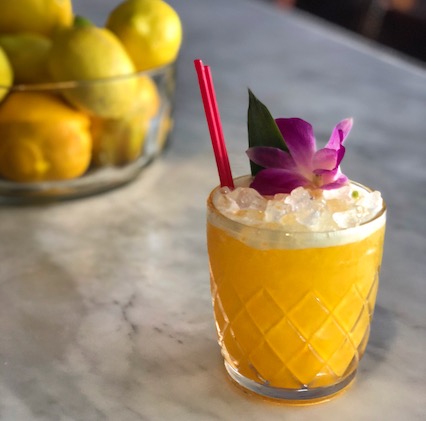
At The Monarch Cocktail Bar & Lounge in Kansas City, St. George Spirits’ green chile vodka attracts customer interest. Vodka sells about the same as bourbon, about 30% for each, says bar director Brock Schulte. He stocks three flavored vodkas and six straight options.
“As for unusual presentations, we have what we call the Kansas City Ice Water, which is a blend of a vodka-soda and a gin-tonic,” Schulte says. The carbonated drink is so popular it’s kegged for quick service. The cocktail has a split base of Broker’s London Dry gin and Tito’s vodka, with Dolin Blanc, fino sherry and Boylan’s tonic. “There’s a bunch of citrus with a kiss of blanc vermouth and fino sherry,” says Schulte.
“The call for Tito’s is so strong we limit the number of different vodkas we offer,” concedes Giordano. But among the unusual labels at Six\West are Zubrowka, a Polish bison-grass vodka, the rice-based Haku vodka from Japan and Beluga Noble Russian vodka.
Tupelo Honey Cafes carry anywhere from nine to 19 different vodka brands, with an emphasis on local producers in each location. These include Topo organic vodka from Chapel Hill, NC, and Thirteenth Colony Distilleries Southern vodka from Atlanta. “The most unique vodka we carry is Duckworth Truffle Vodka” made in Dallas, Alford says.
Creating With Vodka
“Vodka is a blank canvas. You can get as creative as you want,” says Wyatt at All Day Hospitality. Ward 8’s Hang Ten cocktail—a non-traditional twist on a vodka drink—features vodka, passion fruit purée, honey and crushed ice.
“At Six\West, I challenge my bar staff to learn how to use every spirit and brand properly, even vodka,” says Giordano. “Any average bartender can make a cocktail with vodka. What separates the great ones is understanding the intricacies of each vodka and understanding how to apply different textures to the appropriate flavors,” he explains.
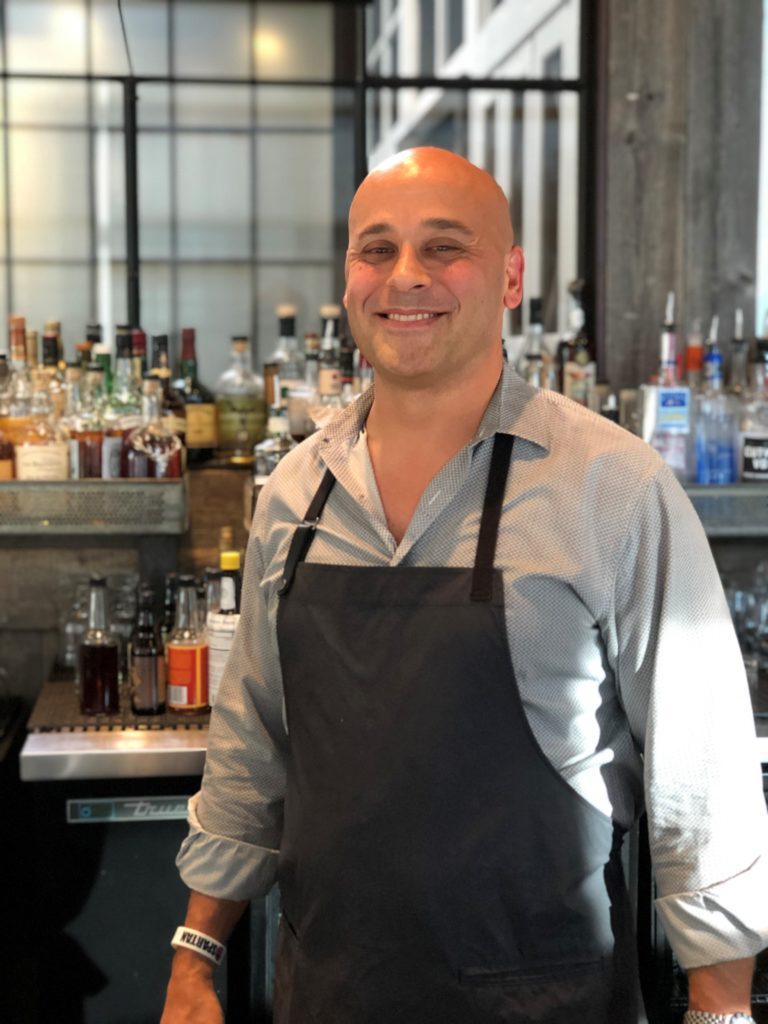
“For example, rye-based vodkas with spice notes may work better in a Bloody Mary; and vodkas with a creamier texture may work better in Espresso Martinis,” Giordano says.
“Vodka is a good spirit to use if you need to provide an alcohol base in a drink without drastically changing the flavor profile of the other ingredients you are working with,” says Landi at Miller Union. For instance, one specialty cocktail is The One & Only, which mixes vodka with elderflower liqueur, Pamplemousse liqueur, bitters and lemon juice.
But vodka is not strictly speaking an odorless and tasteless spirit—even the TTB recently amended its definition to be a bit more descriptive. “When I choose a vodka, I want it to have some character,” Landi notes.
Since vodka is such a neutral spirit, “it offers a lot of freedom for infusions and creativity,” says Thomas at Bankers Hill. “We usually have at least one or two interesting vodka infusions working.”
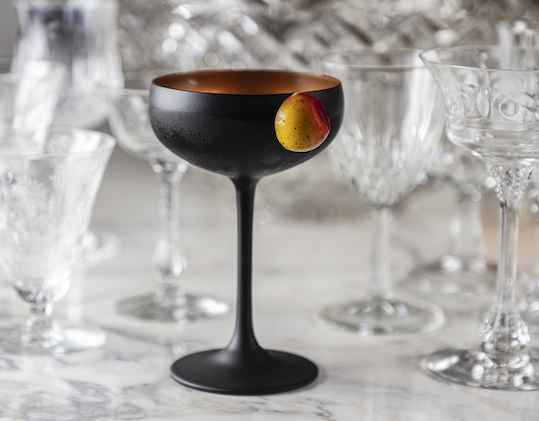
A recent riff on the French 75 used a basil- and rose- hip-infused vodka with fresh strawberries, lemon and peach, topped with a sparkling pinot noir rosé. “The cocktail was bright and refreshing, and vodka worked better than a juniper-forward gin would have,” Thomas says.
“Vodka is a category with a lot of passion behind it,” says Schulte at The Monarch. “We stay fluid and try to show off good brands while using spirits in a way that is in line with the guests’ needs and wants.”
Among the creative vodka-based cocktails at The Monarch are The Carriage Club, made with Tito’s vodka, fresh berry-Sauternes coulis, mascarpone, red wine and lemon; and Only For The Bold, concocted with Rieger’s Midwestern premium vodka, Amaro Montenegro, Rhum Clement Mahina Coco, Callebaut Ruby Couverture Chocolate, orange water and Demerara sugar.
A holiday cocktail combined Winterspice J. Rieger & Co. premium vodka, Bacardi Gran Reserva Diez rum, Benedictine, Demerara sugar, Samuel Smith Chocolate Stout gomme, Fee Brothers Aztec chocolate bitters and Five Farms Irish Cream.
Instagramable Eye Candy
Tupelo Honey’s most interesting vodka cocktail is the Smoky Water Cosmopolitan, which was created by John Wilson at the Downtown Asheville location, says Alford.
It’s made with Dixie’s citrus Vodka and white cranberry juice, served over ice and garnished with watermelon-flavored Jolly Rancher-infused dry ice smoke.
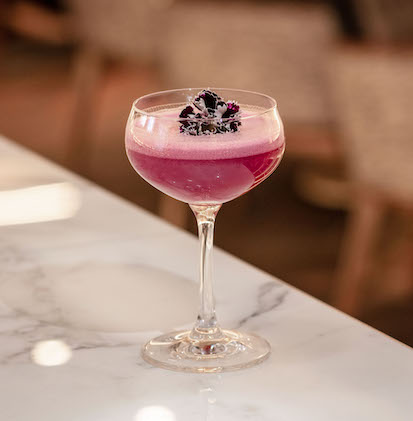
“It’s brilliant; the drink literally tastes like a watermelon Jolly Rancher, and when the server walks through the dining room with the dry ice smoke trailing them, we sell another half dozen Smoky Water Cosmos immediately,” Alford notes. What’s more, pictures of the drink pop up all the time on the chain’s Instagram page.
A signature cocktail at Six\West, the Saff-Ron Swanson attracts guests with its unique garnish and flavor profile. Vodka is infused with saffron and rose, then shaken with clover honey, lemon, sesame oil and white balsamic vinegar.
“The cocktail is savory, yet balanced and really hits that ‘fifth taste’ sense of umami,” notes Giordano. Served with an adhesive mustache clipped to the glass—a tribute to the Parks and Recreation TV series character Ron Swanson—the drink garners lots of Instagram posts.
Promotion and Education
When it comes to vodka, bartenders have to try harder. Consumers need to be educated about the taste of this so-called tasteless spirit, schooled in the differences between the various distillates and nuances of distillation and other production processes.
“We’re working towards moving the program and clientele away from normal vodka consumption to more flavorful options,” says Thomas at Bankers Hill. “We’ll keep vodka drinkers satiated with interesting cocktail constructs that will help to expand their palate and perception of craft spirits.”
Giordano at Six\West encourages those dedicated to their mixology craft “to dive in and unveil the different layers you might find in vodka. Educating yourself goes a long way in changing the attitude about vodka among bar- tenders and consumers.”
Tupelo Honey works closely with Dixie Vodka, whose parent company Grain & Barrel hosts an event in some stores almost monthly, says Alford. Since the aforementioned Smoky Watermelon Cosmo uses Dixie’s citrus vodka, “we almost always serve a round of those. We will continue to watch the trends and look for great products to incorporate further into our programming.”
Alford says he’s a firm believer in the ongoing cycle of what’s popular, “and now that we have gone through the whiskey, tequila, gin and rum fads, it makes sense that we are returning to vodka.”
Thomas Henry Strenk is a Brooklyn-based writer specializing in all things drinkable.
For more on-premise spirits trends that Cheers has covered this year, see It’s A Rum Thing, Thirst For Tequila Keeps Up and Brandy’s Many Branches.

